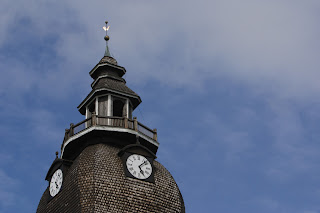Lightning Rod Protection For Safe Lightning Dissipation

A lightning rod is connected via a low-resistance wire or cable to the earth or water below, where the charge may be safely dissipated. As a storm intensifies, it gets electrically charged; a lightning strike occurs when this cloud neutralizes itself with the ground. Any structure that sits between the cloud and ground gets charged and is damaged in the process. Thus a lightning rod protection is installed on the roof of buildings for protection. Lightning can " jump around " when it strikes. This "jumping" is associated with the electrical potential of the strike target with respect to the earth's potential. The lightning can strike and then "seek" a path of least resistance by jumping around to nearby objects that provide a better path to ground. If the strike occurs near the lightning rod protection system, the system will have a very low-resistance path and can then receive a "jump," diverting the strike current to ground before it ...